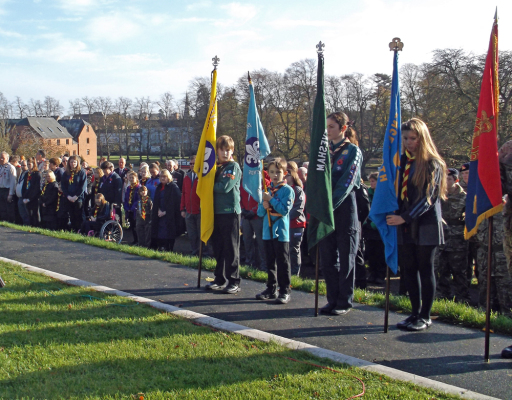They shall grow not old, as we that are left grow old:
Age shall not weary them, nor the years condemn.
At the going down of the sun and in the morning
We will remember them.
It felt ever so slightly strange at the Remembrance Day service this morning. Remembrance Day is timed to coincide with the end of the First World War, being the closest Sunday to Armistice Day, the actual anniversary of the end.
This year, though, we’ve been focussing more on the start of the war, given that 2014 marks the centenary of its outbreak. A hundred years ago today, we were still in the early phase of the war and there was still a lot of optimism that it would be “all over by Christmas”. There had, of course, already been casualties, but the sheer grinding horror of the war had yet to become apparent.
But there’s a tendency even now, though, to underestimate how bad the war was. We’re used to modern military campaigns, where even a single death makes media headlines. It’s hard to comprehend the scale of a conflict where so many people died.
So, let’s see if we can put it into perspective. The Afghanistan conflict has been the most deadly of any war zone that British forces have been involved in over the past 40 years, resulting in a total of 453 British military lives lost. That’s more than Iraq (179 British military deaths) or the Falklands (255). The precise number of British military deaths in WW1 isn’t known, but even taking a low-end estimate the number of deaths was around 750,000. That’s an average of more than 500 deaths per day – more than the entire number lost in Afghanistan over a period of thirteen years.
Another way of looking at it is to consider the proportion of Britain’s population lost in the war. The overwhelming majority of military casualties were of young adult men aged from 18 to 35. There were around 6 million men of that age group in the UK at the start of the war. More than ten percent of that age group were lost.
Here’s a way to visualise that. Think of all the men you know personally who fall into that age group. Brothers, sons, fathers, husbands, boyfriends, uncles, nephews, friends, colleagues. Restrict it to people you would say that you actually know, not just acquaintances or social media friends. The sort of people whose funeral you would attend if they were run over in the street tomorrow.
Got that in your head? OK, now imagine that over the next four years, one in ten of them will be killed. Maybe one in fifteen if you’re lucky. Maybe one in five if you’re not.
That’s a lot. The chances are that at least one of your family will be among the casualties. There’s a strong probability that one of the people closest to you will not survive the next four years. It’s almost certain that several of your friends and colleagues will be dead. If you’re male, and you fall into that age group yourself, you may well be dead too.
Think of that, when you next wear a poppy in remembrance of those who died.

